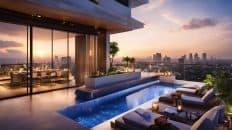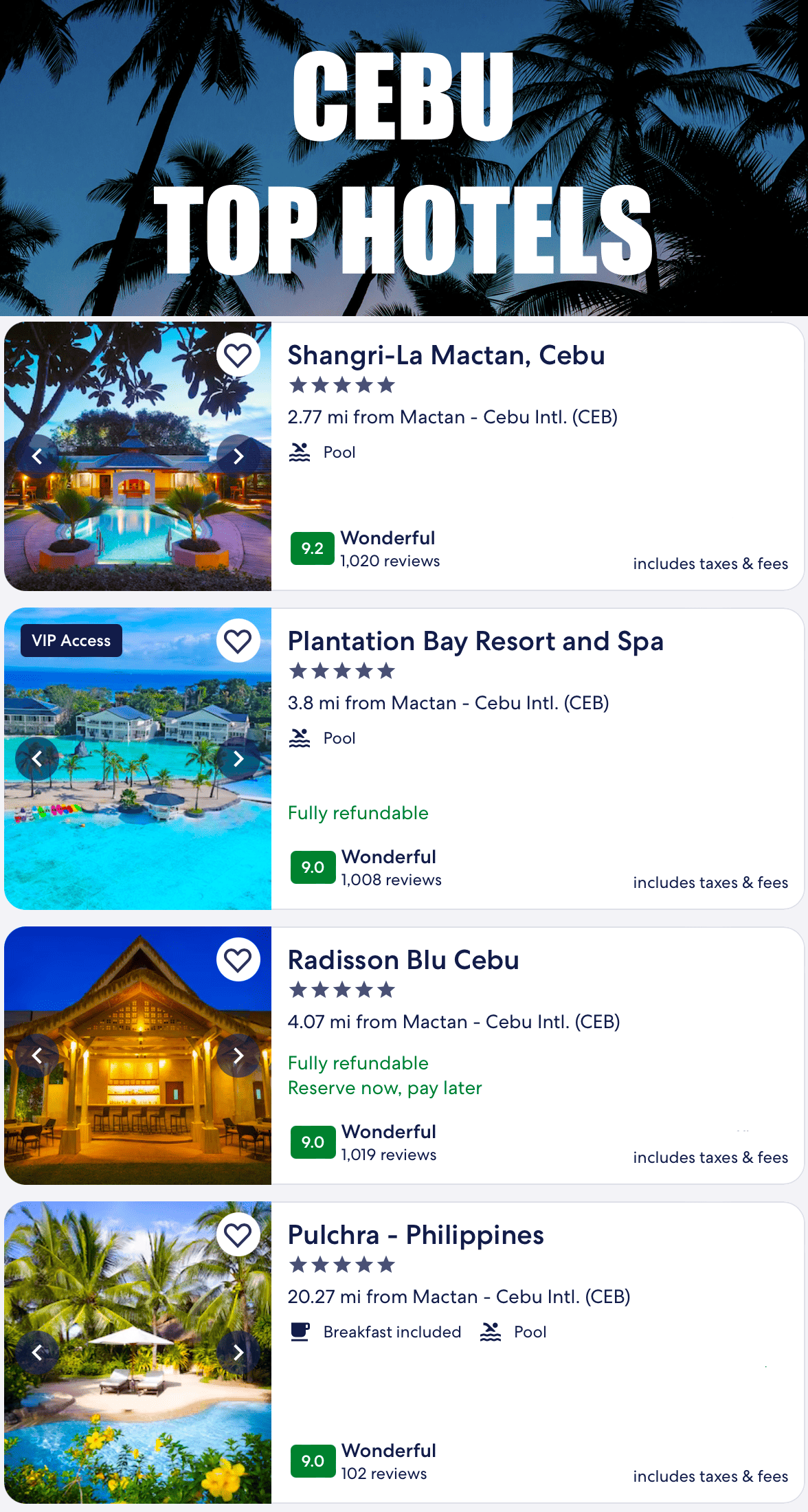The Heritage of Cebu Monument is a historical landmark and popular tourist attraction in Cebu, Philippines. It stands as a cultural icon, celebrating the storied past and vibrant heritage of Cebu City. Located in the Parian District, once the center of trade and home to elite Cebuano families during the Spanish period, the monument showcases important events in the city’s history from the colonial rule of Spain to the beatification of Pedro Calungsod.
Key Takeaways:
- The Heritage of Cebu Monument is a cultural icon and historical landmark in Cebu City, Philippines.
- The monument showcases important events in Cebu’s history, from Spanish colonial rule to the beatification of Pedro Calungsod.
- Located in the Parian District, it stands on the site of the original St. John the Baptist church.
- The monument is a must-visit tourist attraction and a symbol of Cebu’s rich heritage.
- Explore the captivating architecture and intricate sculptures that depict Cebu City’s history.
The History Behind the Heritage of Cebu Monument
The Heritage of Cebu Monument is more than just a visually stunning sculpture; it represents the rich history and cultural heritage of Cebu City. Constructed by talented artist Eduardo Castrillo, with support from former senator Marcelo Fernan and other private organizations, this iconic monument is made of robust materials such as concrete, bronze, brass, and steel.
Depicting significant figures and events in Cebu City’s history, the Heritage of Cebu Monument serves as a powerful reminder of the city’s past. Among its remarkable portrayals are the famed battle between Ferdinand Magellan and Lapu-Lapu, the baptism of Rajah Humabon, and the historic clash in Mactan. This monument also features statues of Pedro Calungsod, the young Filipino saint, and President Sergio Osmena Sr., a key figure in Philippine history.
Situated in the Parian District, this monument’s location holds its own historical significance. The Parian District was once a thriving center of trade and the residence of esteemed Cebuano families during the Spanish colonial rule. It stands as a testament to the vibrant history and cultural heritage that shaped Cebu City.
Through its intricate design and profound symbolism, the Heritage of Cebu Monument invites visitors to delve into the depths of Cebu’s captivating history and appreciate the cultural legacy that still resonates to this day.
Depictions of the Heritage of Cebu Monument
The Heritage of Cebu Monument beautifully illustrates key moments from Cebu City’s captivating history. Within the monument, visitors can marvel at intricate statues and depictions that bring historical events to life. Let’s explore the various scenes depicted at the Heritage of Cebu Monument:
1. Ferdinand Magellan and Lapu-Lapu
The monument proudly showcases statues of Ferdinand Magellan and Lapu-Lapu, representing the legendary Battle of Mactan. This pivotal conflict marked the first-known resistance by Filipinos against foreign invaders and stands as a symbol of bravery and national identity.
2. Magellan’s Cross
Another notable depiction at the Heritage of Cebu Monument is a portrayal of Magellan’s Cross. This iconic symbol signifies the arrival of Christianity in the Philippines and is housed within the Basilica del Sto. Niño, a nearby historical site.
3. Basilica del Sto. Niño and Cebu Metropolitan Cathedral
Within the monument, you’ll also find depictions of the revered Basilica del Sto. Niño and the Cebu Metropolitan Cathedral. These significant religious landmarks exemplify Cebu City’s deep spiritual roots and showcase stunning architectural grandeur.
4. Spanish Galleon
The Heritage of Cebu Monument proudly features a representation of a Spanish galleon. This tribute commemorates Ferdinand Magellan’s historic circumnavigation, which brought him to the shores of Cebu and forever altered the course of Philippine history.
5. Sinulog Festival
Lastly, the monument includes a portrayal of the vibrant Sinulog Festival. This grand celebration, held annually in Cebu, showcases colorful street dancing and religious processions, reinforcing the city’s enduring cultural traditions.
Visiting the Heritage of Cebu Monument allows you to immerse yourself in the rich tapestry of Cebu City’s history and culture. The intricate depictions within the monument serve as a testament to the resilience, heroism, and spiritual devotion that define the Filipinos’ enduring legacy.
How to Get to the Heritage of Cebu Monument
Visiting the Heritage of Cebu Monument is convenient and accessible, thanks to various public transportation options available.
Here are some ways to reach the monument:
- By Jeepney: Take a jeepney with a signboard indicating SM and Pier Area. These routes pass by the Heritage of Cebu Monument, allowing you to easily reach your destination.
- By Taxi: Opt for a taxi ride to the monument for a comfortable and direct journey. Taxis are readily available throughout Cebu City, and the monument’s location is easily recognizable.
- By Pedicab: For a unique and leisurely experience, consider taking a pedicab to the Heritage of Cebu Monument. Pedicabs are a popular mode of transport in the city and offer a charming way to explore the surroundings.
The Heritage of Cebu Monument is situated in the Parian District, near the Parian Fire Station in Sikatuna Street, Cebu City. By utilizing public transport, you can efficiently navigate your way to this historical landmark and immerse yourself in Cebu’s rich cultural heritage.
Features of the Heritage of Cebu Monument
The Heritage of Cebu Monument is a remarkable depiction of Cebu City’s history and heritage. This iconic landmark showcases intricate sculptures made of brass, bronze, concrete, and steel. Renowned artist Eduardo Castrillo masterfully crafted each statue, capturing the essence and significance of key events and figures throughout Cebu’s past.
The architecture of the monument is visually striking, making it a captivating sight for visitors. The attention to detail in the construction of each sculpture is evident, highlighting the skill and craftsmanship involved in bringing Cebu’s history to life. The Heritage of Cebu Monument stands as a testament to the cultural richness and heritage of the city.
Nearby Attractions to the Heritage of Cebu Monument
Surrounding the Heritage of Cebu Monument are several historical attractions that further enrich the experience of visitors. These attractions provide a deeper understanding of Cebu City’s vibrant heritage and showcase its cultural significance. Here are two notable nearby attractions:
1. Yap-Sandiego Ancestral House
The Yap-Sandiego Ancestral House, located across the Heritage of Cebu Monument, is one of the oldest residential houses in the country. Constructed using coral stones and wood, this ancestral house exemplifies traditional Filipino architecture. Visitors can explore its well-preserved interiors and admire the collection of ancient artworks and antique pieces. The Yap-Sandiego Ancestral House provides a glimpse into the lives of the Chinese merchants who once resided here and contributed to Cebu’s history.
2. Colon Street
Colon Street, known as the oldest street in the Philippines, is another prominent attraction near the Heritage of Cebu Monument. This bustling street is lined with shops, restaurants, and historical buildings. As visitors stroll along Colon Street, they can marvel at the charm of the old buildings that reflect Cebu’s colonial past. From traditional shops selling local delicacies to modern establishments, Colon Street offers a mix of the old and the new, making it an exciting destination for history enthusiasts and shoppers alike.
A visit to these nearby attractions enhances the overall experience of exploring the Heritage of Cebu Monument. From stepping into the past at the Yap-Sandiego Ancestral House to immersing oneself in the vibrant atmosphere of Colon Street, visitors can delve deeper into Cebu City’s rich history and heritage.
Reviews and Impressions of the Heritage of Cebu Monument
Visitors to the Heritage of Cebu Monument have shared glowing reviews of this iconic cultural landmark, emphasizing its cultural significance and the importance of preserving Cebu’s rich history. The intricate sculptures and detailed representations of historical events at the monument have left tourists in awe and admiration.
“The Heritage of Cebu Monument is a masterful tribute to Cebu’s history and heritage. The statues and structures beautifully showcase significant moments in Cebu’s past, providing a glimpse into its vibrant culture. It is impressive to see how this monument serves as a reminder of the city’s rich legacy.” – Sarah M., Australia
Many visitors have expressed that the Heritage of Cebu Monument holds deep cultural significance and acts as a symbol of Cebu’s history. It provides educational value, allowing visitors to understand and appreciate the historical events that shaped the city and its people.
“As a history enthusiast, I found the Heritage of Cebu Monument to be an amazing testament to the city’s past. Each sculpture tells a story, transporting you back in time to witness pivotal moments in Cebu’s history. Its cultural significance cannot be overstated.” – Mark T., USA
While the reviews are overwhelmingly positive, some visitors have noted the need for maintenance and upkeep to ensure the monument’s longevity. Suggestions for regular maintenance and preservation efforts have been mentioned in a few reviews.
“The Heritage of Cebu Monument is a treasure, but it needs proper care to withstand the test of time. I hope the authorities prioritize its maintenance to preserve its historical and cultural importance for future generations to appreciate.” – Maria C., Philippines
Overall, the impressions of the Heritage of Cebu Monument highlight its cultural significance, impressive sculptures, and the valuable role it plays in preserving Cebu’s history. It continues to be a must-visit attraction for tourists and locals alike, showcasing the rich heritage of Cebu City.
Best Time to Visit the Heritage of Cebu Monument
If you’re planning a visit to the Heritage of Cebu Monument, it’s important to consider the best time to go. While the monument is open all year round, there are certain times that offer a more enjoyable experience.
The best time to visit the Heritage of Cebu Monument is during the dry season, which typically runs from November to April. During this period, Cebu experiences less rainfall, making it ideal for exploring the outdoor monument and learning about Cebu’s history at your own pace.
The daily opening hours of the Heritage of Cebu Monument allow visitors ample time to fully immerse themselves in the historical significance of this cultural icon. The monument opens early in the morning and closes late in the evening, ensuring you have plenty of time to explore and take in the intricate sculptures and representations of important events in Cebu’s past.
Whether you’re a history enthusiast or simply curious about the rich heritage of Cebu, visiting the Heritage of Cebu Monument during the dry season and taking advantage of the daily opening hours will enhance your experience and provide you with a deeper understanding of this remarkable site.
So plan your visit accordingly, pack your camera, and get ready to delve into the fascinating history of Cebu at the Heritage of Cebu Monument.
What to Know Before Visiting the Heritage of Cebu Monument
If you’re planning to visit the Heritage of Cebu Monument, here are some useful tips to enhance your experience:
- Free Entrance: One of the best things about the Heritage of Cebu Monument is that there is no entrance fee. You can explore this iconic attraction without any cost, making it accessible for everyone.
- Tour Guides: To fully appreciate the history and significance of the monument, it’s recommended to hire a knowledgeable tour guide. They can provide in-depth explanations and fascinating stories associated with the monument and its depictions.
- Accessible Location: The Heritage of Cebu Monument is conveniently located in downtown Cebu City. Whether you choose to take public transport or prefer to walk, reaching the monument is easy. It’s a great opportunity to explore the surrounding area and other nearby attractions.
By keeping these tips in mind, you’ll have a memorable visit to the Heritage of Cebu Monument, immersing yourself in Cebu’s history and culture.
Visitor Reviews:
Incredible monument that beautifully captures the essence of Cebu’s heritage. And the best part—a free attraction that should not be missed! Hiring a tour guide made a huge difference in understanding the stories and historical events depicted. The location was easily accessible, allowing us to explore other nearby attractions as well. Highly recommended!
Visiting the Heritage of Cebu Monument was a fascinating experience. Learning about the history and significance behind each sculpture was truly enlightening. It’s great that there is no entrance fee, making it accessible to everyone. I recommend taking a guided tour to fully appreciate this cultural treasure.
| Aspect | Rating | Visitor Comments |
|---|---|---|
| Accessibility | 4.5/5 | Easily reachable by public transport or walking, ideal for all visitors. |
| Entrance Fee | 5/5 | Free admission, making it accessible to everyone. |
| Tour Guides | 4/5 | A tour guide is recommended for a deeper understanding of the monument’s history. |
Conclusion
The Heritage of Cebu Monument is a true cultural icon that represents the rich history of Cebu City. This must-visit attraction stands as a testament to the city’s historical significance and is a source of pride for the locals. The intricate sculptures and detailed depictions of important events make it a captivating experience for visitors.
By exploring the Heritage of Cebu Monument, you can immerse yourself in the vibrant heritage of Cebu City and gain a deeper understanding of its cultural tapestry. It serves as a reminder of the city’s past, showcasing its contributions to the Philippines’ history. Whether you are a local resident or a tourist, a visit to this monument is an enriching experience that should not be missed.
So, make sure to include the Heritage of Cebu Monument in your itinerary when visiting Cebu City. Discover the stories behind each sculpture and embrace the historical significance of this renowned cultural landmark. It is a place where the past comes alive, allowing you to connect with the fascinating journey of Cebu’s heritage.
FAQ
Is there an entrance fee to visit the Heritage of Cebu Monument?
No, there is no entrance fee to visit the Heritage of Cebu Monument. It is open to the public and accessible to all visitors.
How can I get to the Heritage of Cebu Monument?
The Heritage of Cebu Monument is easily accessible by public transport. You can take a jeepney with a signboard indicating SM and Pier Area, which passes by the monument. Alternatively, you can also ride a taxi or pedicab. The monument is located near the Parian Fire Station in Sikatuna Street, Cebu City.
What are the nearby attractions to the Heritage of Cebu Monument?
There are several nearby attractions to the Heritage of Cebu Monument. Across the monument is the Yap-Sandiego Ancestral House, one of the oldest residential houses in the country. You can also explore Colon Street, known as the oldest street in the Philippines, and learn more about the rich history of the area.
What are the features of the Heritage of Cebu Monument?
The Heritage of Cebu Monument is an illustration consisting of sculptures made of brass, bronze, concrete, and steel. It was constructed by renowned artist Eduardo Castrillo, with funding from the late senator Marcelo Fernan and private donations. The monument depicts significant figures and events in Cebu City’s history, showcasing its cultural heritage.
When is the best time to visit the Heritage of Cebu Monument?
The Heritage of Cebu Monument is an all-year-round destination, but the best time to visit is during the dry season when the weather is more favorable. The monument is open daily to visitors, allowing them to explore and learn about Cebu’s history at their convenience.
Source Links
- https://www.tripadvisor.com/Attraction_Review-g298460-d2559471-Reviews-Cebu_Heritage_Monument-Cebu_City_Cebu_Island_Visayas.html
- https://guidetothephilippines.ph/destinations-and-attractions/heritage-of-cebu-monument
- https://cebuinsights.com/explore-cebu/historical/fascinating-cebu-heritage-monument/











Add comment